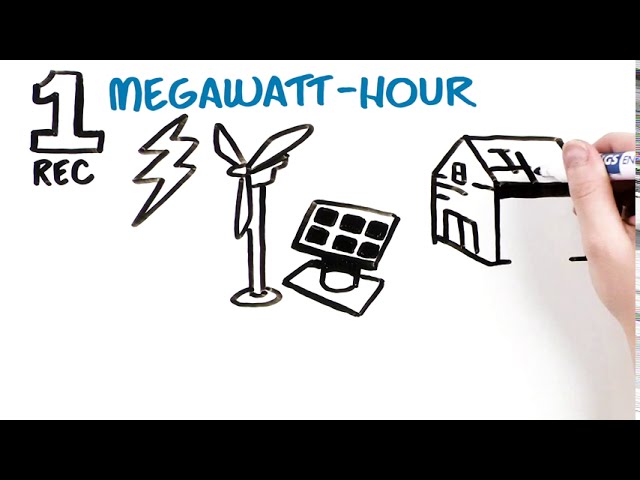
Introduction to Renewable Energy Credits
In today’s world, the importance of renewable energy cannot be overstated. As global temperatures rise and environmental concerns grow, transitioning to cleaner energy sources has become essential. One significant mechanism supporting this transition is the concept of Renewable Energy Credits (RECs). This article serves as your complete guide to understanding RECs, their significance, and their impact on the renewable energy landscape.
What are Renewable Energy Credits?
Renewable Energy Credits are tradable certificates that represent the environmental benefits of generating energy from renewable sources. Each credit typically represents the generation of one megawatt-hour (MWh) of renewable energy. When a renewable energy producer generates electricity, they receive RECs as proof of their production. These credits can then be sold or traded, providing a financial incentive for the production of renewable energy.
The Function of RECs
RECs serve multiple functions in the energy market:
- Market Incentives: They create a financial incentive for producers to generate renewable energy.
- Compliance Mechanisms: Many states and countries have mandates requiring utilities to obtain a certain percentage of their energy from renewable sources.
- Transparency: RECs provide a transparent way to track renewable energy generation and consumption.
Types of Renewable Energy Credits
There are several types of RECs, each associated with different renewable energy sources:
- Solar Renewable Energy Credits (SRECs): Generated from solar energy production.
- Wind Renewable Energy Credits: Generated from wind energy production.
- Biomass Renewable Energy Credits: Generated from biomass energy production.
- Hydropower Renewable Energy Credits: Generated from hydroelectric energy production.
How RECs Work
Understanding how RECs function within the energy market is crucial:
- Generation: When a renewable energy facility generates power, it earns RECs based on the amount of energy produced.
- Certification: The credits are certified by a governing body to ensure legitimacy.
- Trading: RECs can be sold or traded in various markets, allowing companies to meet renewable energy requirements.
The Benefits of Renewable Energy Credits
RECs provide numerous benefits for both producers and consumers of renewable energy:
1. Financial Support for Renewable Energy Projects
By creating a market for RECs, governments and organizations can provide much-needed financial support for renewable energy projects. This support can help to:
- Lower the cost of renewable energy production.
- Encourage investment in new technologies.
- Facilitate the growth of the renewable energy sector.
2. Environmental Impact
Using RECs helps reduce greenhouse gas emissions and promotes sustainable practices. By incentivizing the generation of clean energy, RECs contribute to a healthier environment.
3. Consumer Choice
Consumers can choose to purchase renewable energy, often through utility companies that offer green energy programs. This choice is facilitated by the availability of RECs, making it easier for consumers to support sustainable practices.
Challenges and Criticisms of Renewable Energy Credits
Despite their benefits, RECs face several challenges and criticisms:
1. Market Volatility
The price of RECs can be highly volatile, influenced by various factors including government policies, demand for renewable energy, and changes in the energy market. This volatility can make it challenging for producers to rely on RECs as a stable source of income.
2. Greenwashing Concerns
Some critics argue that companies may purchase RECs to claim they are using renewable energy without actually changing their energy consumption practices. This phenomenon, known as greenwashing, can undermine the credibility of RECs and the renewable energy movement.
3. Complexity of the System
The system surrounding RECs can be complex and difficult for consumers and producers to navigate. Understanding the rules and regulations governing RECs requires a certain level of expertise that may not be accessible to everyone.
The Future of Renewable Energy Credits
The future of RECs looks promising, with several trends shaping their evolution:
1. Increasing Demand for Renewable Energy
As the world shifts towards cleaner energy sources, the demand for RECs is expected to rise. This increase in demand will likely drive innovation in renewable energy technologies and infrastructure.
2. Regulatory Changes
Government policies and regulations will continue to influence the REC market. As more countries adopt renewable energy targets, the framework for RECs may evolve to accommodate new standards and requirements.
3. Technological Advancements
Advancements in technology may lead to more efficient and cost-effective methods of generating renewable energy. These innovations could impact the supply and demand dynamics of RECs, ultimately affecting their value in the market.
How to Get Involved with Renewable Energy Credits
For individuals and organizations looking to get involved with RECs, there are several pathways:
1. Purchase RECs
Consumers can purchase RECs to support renewable energy generation. Many utility companies offer green energy programs that include the option to buy RECs.
2. Generate Renewable Energy
If you have the resources, consider investing in renewable energy systems, such as solar panels. By generating your own renewable energy, you can earn RECs and contribute to a sustainable future.
3. Advocate for Renewable Energy Policies
Support policies that promote renewable energy and the use of RECs. Engaging with local and national representatives can help drive change in energy policy.
Conclusion
Renewable Energy Credits play a crucial role in the transition to a sustainable energy future. By understanding how they work and their significance in the renewable energy market, you can make informed decisions about your energy consumption and support the growth of clean energy sources. As we continue to face environmental challenges, embracing renewable energy through mechanisms like RECs is more important than ever. Together, we can create a greener, more sustainable future.

